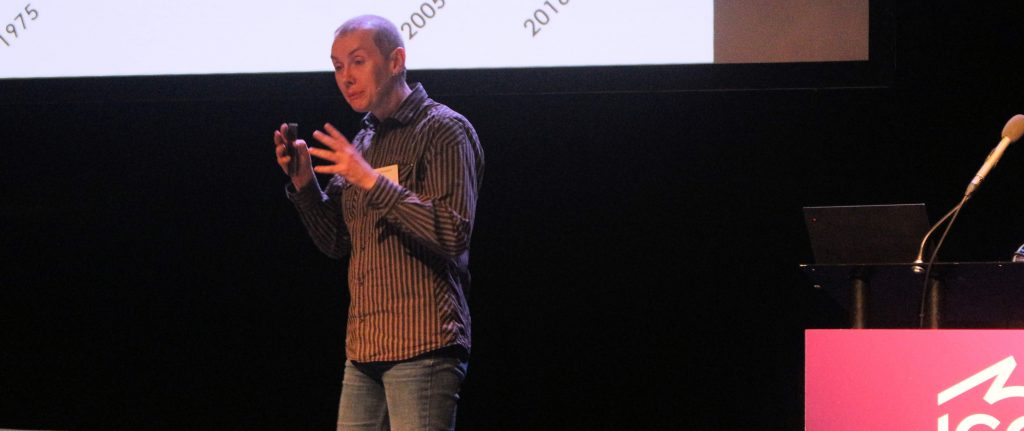The four presentations from Dyalog’18 that we are releasing this week address both the visible (user interface) and invisible (performance) parts of application design. Starting with performance:

“You don’t have to be an engineer to be a racing driver, but you do have to have Mechanical Sympathy.” – former Formula One racing driver Sir John Young “Jackie” Stewart, OBE
This quote was at the heart of the talk by our invited keynote speaker Martin Thompson. In order to write software which performs well, you need to have a basic understanding of how the underlying machinery works. Understanding basic mathematical models for the theoretical throughput of software and hardware helps us take the step from being alchemists to scientists, as we endeavour to write high-performance systems.
 Martin takes us for an entertaining stroll through the evolution of modern processors, and some of the maths behind high performance systems. The good news is that systems which make sequential and predictable memory accesses are likely to find sympathy with modern hardware…
Martin takes us for an entertaining stroll through the evolution of modern processors, and some of the maths behind high performance systems. The good news is that systems which make sequential and predictable memory accesses are likely to find sympathy with modern hardware…
 Marshall Lochbaum, the most recent addition to the core interpreter team at Dyalog, followed up with a talk on a number of his ideas for increasing the mechanical sympathy of Dyalog APL, to take maximum advantage of branch prediction and other features of modern processors. Some strategies take advantage of runtime inspection of the arguments, something that is more natural in an interpreter with the ability to dynamically select data types, as opposed to strongly typed strategies typically employed by compilers.
Marshall Lochbaum, the most recent addition to the core interpreter team at Dyalog, followed up with a talk on a number of his ideas for increasing the mechanical sympathy of Dyalog APL, to take maximum advantage of branch prediction and other features of modern processors. Some strategies take advantage of runtime inspection of the arguments, something that is more natural in an interpreter with the ability to dynamically select data types, as opposed to strongly typed strategies typically employed by compilers.

TamStat is an application which helps students Tame Statistics. In two talks at Dyalog’18, Stephen Mansour and Michael Baas focus on two different aspects of the user experience. In the first talk, Stephen focuses on the notation available to users of TamStat. Where many statistical libraries contain dozens of strangely named functions with a variety of switches and parameters, TamStat uses a small set of functions, combined with another small set of operators, to provide a very simple but extremely elegant notation for computing probabilities based on a wide variety of distributions. For example:
⍝ Probability that 7 coin flips (0.5 specifying a "fair" coin) will result
⍝ in at least 3 heads:
7 0.5 binomial probability ≥ 3
⍝ Probability that a number from a normal distribution with a mean of 0 and
⍝ standard deviation of 1 will be ≤ 3:
0 1 normal probability ≤ 3
I almost wish I could go back to University and start Statistics 101 again ?.

Notation is a powerful tool of thought, but graphs make it easier to visualise the results. Following Stephen’s talk, Michael Baas describes work that Dyalog is doing in collaboration with Stephen, with the goal of wrapping TamStat in a modern, HTML/JavaScript based frontend. Current TamStat is based on the ⎕WC (Window Create) library function and is therefore restricted to running on Microsoft Windows. However, many of Stephen’s students use Mac or Linux laptops. The new interface also makes it possible to run TamStat as a web-based service with a web site. We expect that this work will make TamStat accessible to a much wider audience.
Summary of this week’s videos:



 Follow
Follow